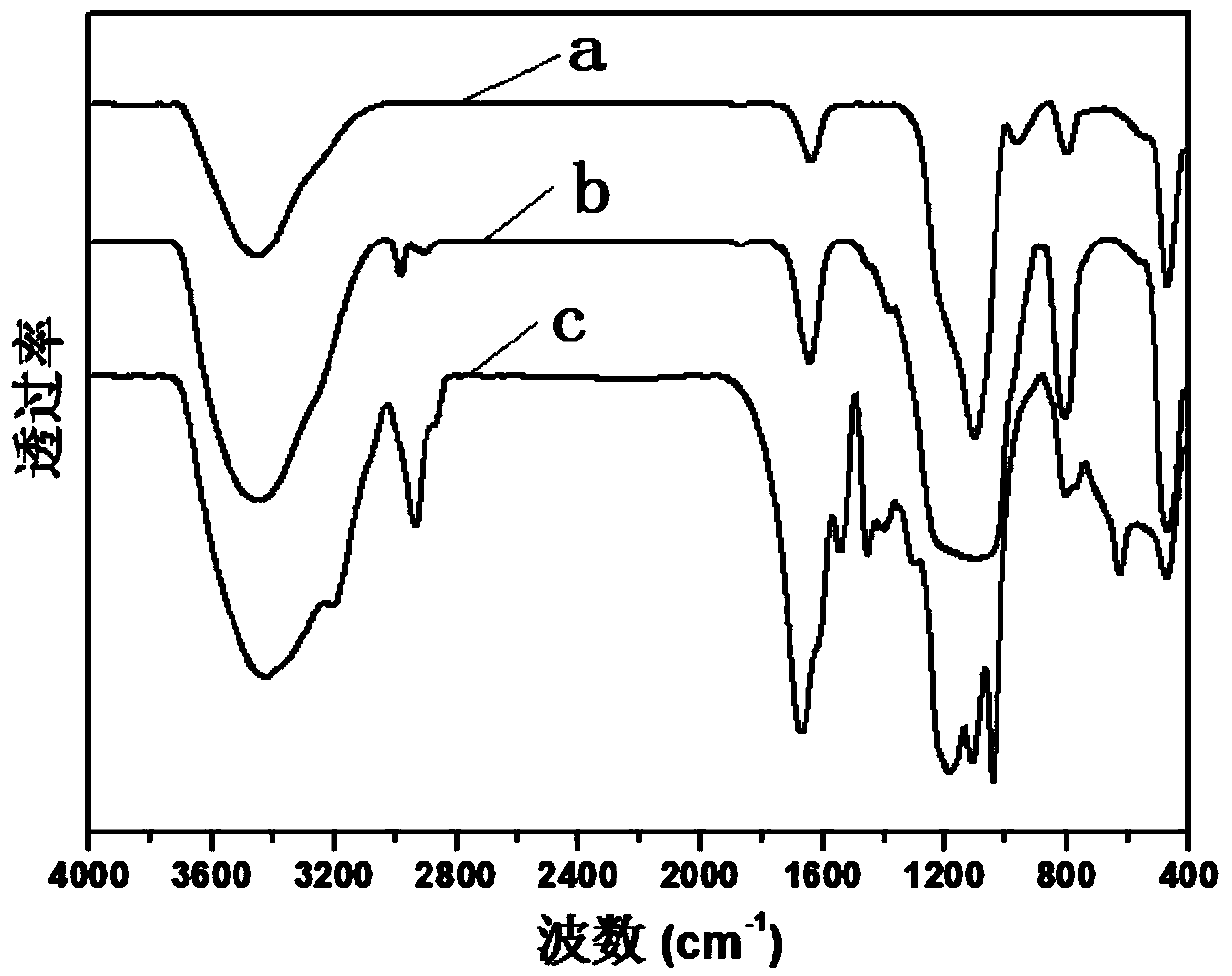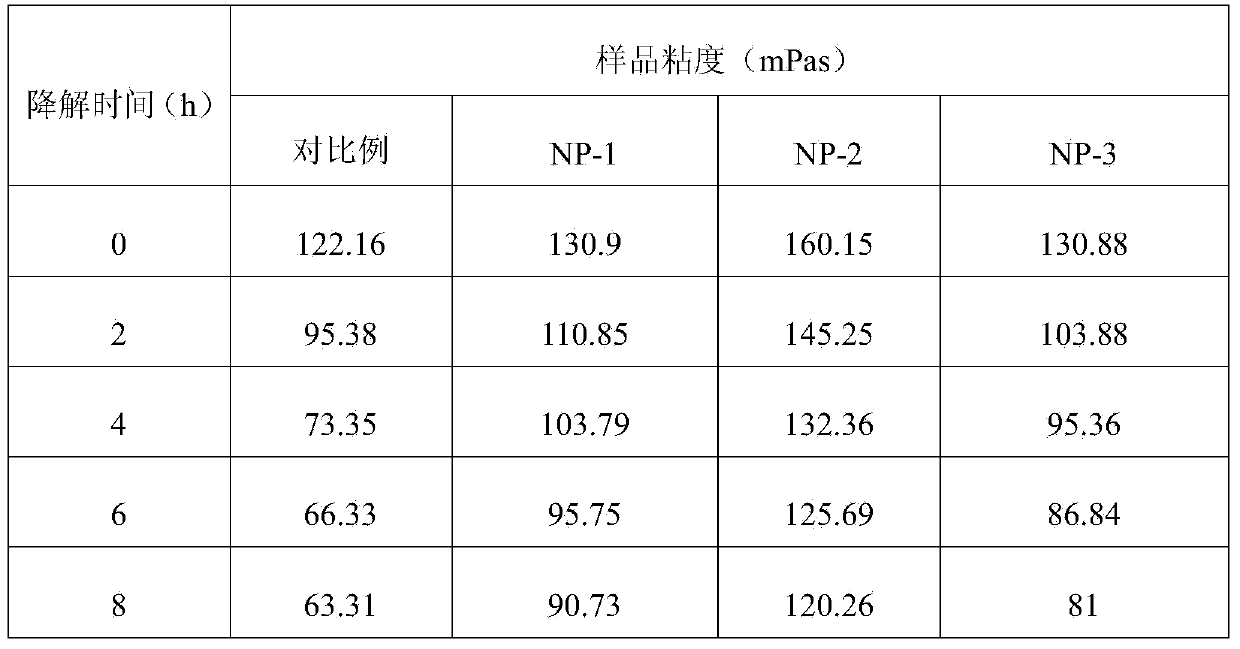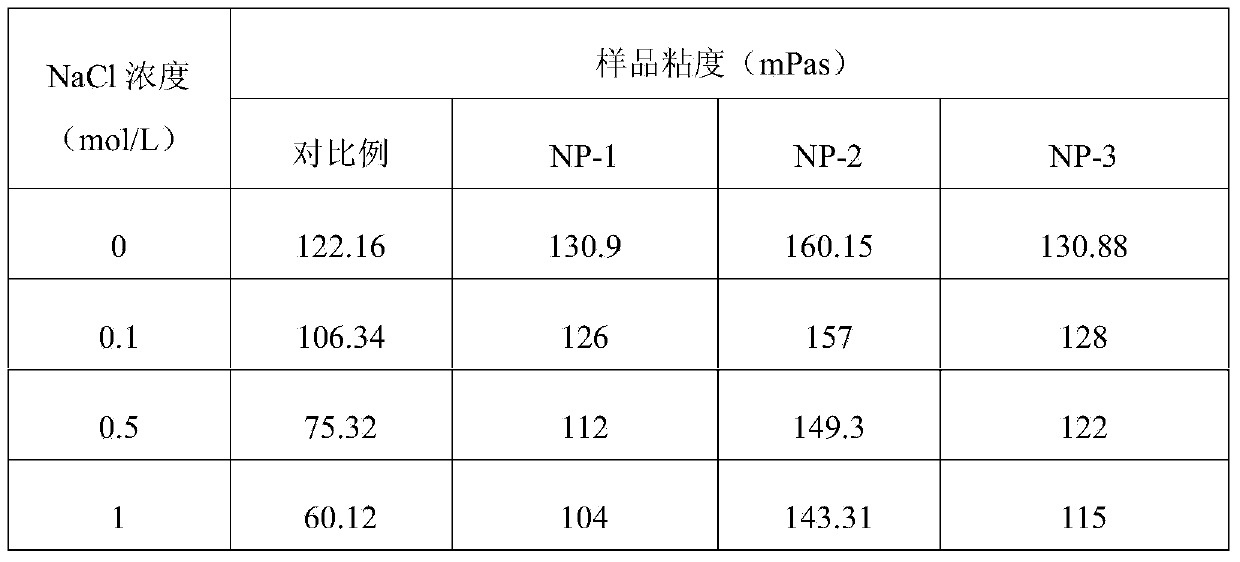Preparation method of temperature-resistant anti-salt anti-shearing nano-polymer
A nano-polymer, temperature-resistant and salt-resistant technology, applied in the field of water-soluble polymer synthesis, can solve the problems of low molecular weight of branched polymers, difficult to apply in a wide range, difficult to apply on a large scale, etc., and achieves high molecular weight, product post-processing Simple, easy-to-store effects
- Summary
- Abstract
- Description
- Claims
- Application Information
AI Technical Summary
Problems solved by technology
Method used
Image
Examples
Embodiment 1
[0046] A method for preparing a temperature-resistant, salt-resistant and shear-resistant nanopolymer, comprising the following steps:
[0047] (1) Measure 50ml of water and add it to a four-necked bottle equipped with a stirrer, nitrogen pipe, vent pipe and thermometer, weigh 1.4419g of sodium lauryl sulfate into the water, and stir at room temperature until completely dissolved to form a stable emulsion;
[0048] (2) Add 1.4216g monomeric acrylamide and 1.295g monomeric 2-acrylamido-2-methylpropanesulfonic acid to the emulsion prepared in step (1), stir at room temperature until completely dissolved; weigh 0.05g A171 Add nano-silica to the above mixing system, and stir until dissolved at room temperature;
[0049] (3) Use sodium hydroxide and hydrochloric acid to adjust the pH of the system prepared in step (2) to 7.5; use a pipette to measure 60 μl of ammonium persulfate solution with a concentration of 1mol / L and add it to the above mixture, stir and dissolve The bottle i...
Embodiment 2
[0057] As described in Example 1, the difference is that in step (2) the amount of A171 nano-silica added is changed to 0.10 g to obtain 1.384 g of temperature-resistant, salt-resistant and shear-resistant nanopolymerization, which is denoted as NP-2. The molecular weight is 4.73×10 6 g / mol.
Embodiment 3
[0059] As described in Example 1, the difference is that in step (2) the amount of A171 nano-silica added is changed to 0.15g, and 1.274g of temperature-resistant, salt-resistant, and shear-resistant nanopolymerization is obtained, which is denoted as NP-3. The molecular weight is 4.28×10 6 g / mol.
PUM
| Property | Measurement | Unit |
|---|---|---|
| Molecular weight | aaaaa | aaaaa |
| Molecular weight | aaaaa | aaaaa |
| Molecular weight | aaaaa | aaaaa |
Abstract
Description
Claims
Application Information
 Login to View More
Login to View More - Generate Ideas
- Intellectual Property
- Life Sciences
- Materials
- Tech Scout
- Unparalleled Data Quality
- Higher Quality Content
- 60% Fewer Hallucinations
Browse by: Latest US Patents, China's latest patents, Technical Efficacy Thesaurus, Application Domain, Technology Topic, Popular Technical Reports.
© 2025 PatSnap. All rights reserved.Legal|Privacy policy|Modern Slavery Act Transparency Statement|Sitemap|About US| Contact US: help@patsnap.com



